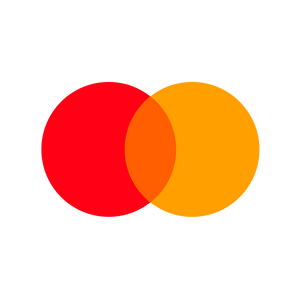How to Choose the Perfect Ruby: A Guide to Evaluating Quality

Got your eyes on a stunning ruby gold necklace but not sure if the gemstone is authentic?
Watch those worries vanish, as we are here with this extensive ruby buying guide that’ll enable you to make an informed decision while buying your favourite ruby jewellery.
Evoking eternal romance and passion, the ruby gemstone stands as nature’s fiery masterpiece. It has found a forever place in engagement rings and other types of jewellery and has a huge fan following the world over. But before we get into the minute details, let’s talk a bit about the history of this gorgeous gem.
History of Rubies
Around 2500 B.C., ruby-encrusted stone age tools were discovered at the Mogok site, once known as Burma. This evidence was linked to the fascinating unearthing and history of this blazing red gemstone. In Sanskrit, ruby has been referred to as ‘ratnaraj’, which translates to ‘the king of precious gemstones. The deep red colour mesmerised people from all cultures and made rubies a treasured and coveted gem spanning several decades. For the early discoverers, this awe-inspiring stone symbolised passion, life, love and on the flip side, rage.
Throughout Asian cultures, the ruby was seen as a talisman for luck and fortune, warding off evil energies. According to ancient Chinese traditions, gifting ruby was significant of how deep one’s love was. Hence, it became a popular gemstone amongst romantic couples and deeply bonded friends.
In the first century A.D., the erudite Roman scholar Pliny documented rubies in his timeless work, “Natural History”, where he reflected on the ruby’s exceptional durability and striking colour. Within his literary compositions, he portrays the hue of a ruby akin to a ‘subdued blaze’.
Did that history nugget on ruby multiply your curiosity? While it’s easy to get swept away, we don’t want you to make a single mistake while buying that lovely ruby diamond necklace or that captivating ruby ring for your love. With so many dupes and fake gemstones floating in the market, it’s hard to distinguish the real ones from the rip-offs. Hence, you may want to take notes from the section below, which will cover everything you need to know about buying authentic ruby jewellery.
Colour
When it comes to assessing quality, colour is one of the top criteria. A rich, vibrant red colour, often referred to as ‘pigeon blood’ commands the highest value. That said, it is important to consider the other red variants when it comes to ruby, as this gemstone can swing between dark to pinkish-purplish red. But if you are looking for the most preferred colour, it is the darkest red on the colour spectrum.
Clarity
Though rarely found, the ruby gemstone can exhibit exceptional transparency and minimal visible inclusions, even under magnification. Clarity significantly impacts the overall value of rubies. Inclusions situated at the gem’s periphery are more appealing and easier to conceal through metal settings and designs as compared to inclusions in the centre, which do not look attractive. If the inclusions are less discernible to the naked eye, then you’ve got a quality ruby on your hands.
Cut
Earlier, we mentioned that colour was of extreme importance. But if there is another C that stands in equal measure, it is the cut. Traditional ruby beads, often hexagonal or elongated, undergo careful analysis by jewellers to achieve a cut that highlights their inherent beauty. While oval and cushion cuts are some of the most popular kinds, there is no standardised cut for rubies as they can be shaped into different forms based on their colour and clarity. A sub-par cut leads to a lacklustre ruby gem, whereas a well-executed cut brings forth the colour, fire and brilliance of this stone.
Carat
You may find this surprising, but rubies are actually denser than diamonds. If you were to draw a comparison between a 1 carat ruby and a 1 carat diamond, the ruby would be a bit smaller even though they would have the same weight as the diamond. To avoid size misconceptions, jewellers often specify carat weight alongside millimetre dimensions. Despite their greater weight, rubies are priced lower than diamonds, which enables the buyer to get a large-sized ruby on a reasonably comfortable budget.
While all these 4 Cs are extremely pivotal in your search for the perfect ruby gemstone, it is even more important to buy ruby jewellery from a trusted source, like Angara. Besides getting quality gemstones shaped and designed in a beautiful way, you will get an authenticity certificate assuring you of the origin and treatments.
Now, with all this knowledge, it’s time to get yourself the ruby jewellery piece you’ve been eyeing since forever. Happy shopping!
FAQs
1. How would you determine if you have a real ruby?
While the 4Cs are vital in determining the quality of a ruby, you can check if your ruby is authentic or not by examining it under a magnifying glass. Most natural rubies have imperfections. If your ruby is perfectly clear, there’s a good chance that it’s a fake stone.
2. How do I find the best gemstone?
To discover the finest gemstone, consider these steps: research the type you desire, prioritise reputable sources, evaluate colour intensity, clarity and cut. Ensure you get an authenticity certificate from the seller. Always check the origin and treatments of the gemstone you’re buying.
3. Why is maintenance frequency important for a ruby gemstone?
Even though ruby is a hard gemstone and ranks a solid 9 on the Mohs scale of hardness, environmental factors and regular wear and tear can dull the brilliance of this passion-evoking gemstone. If you want to keep your ruby in its finest form, make sure you clean it regularly and keep it away from any kind of harsh chemicals.













